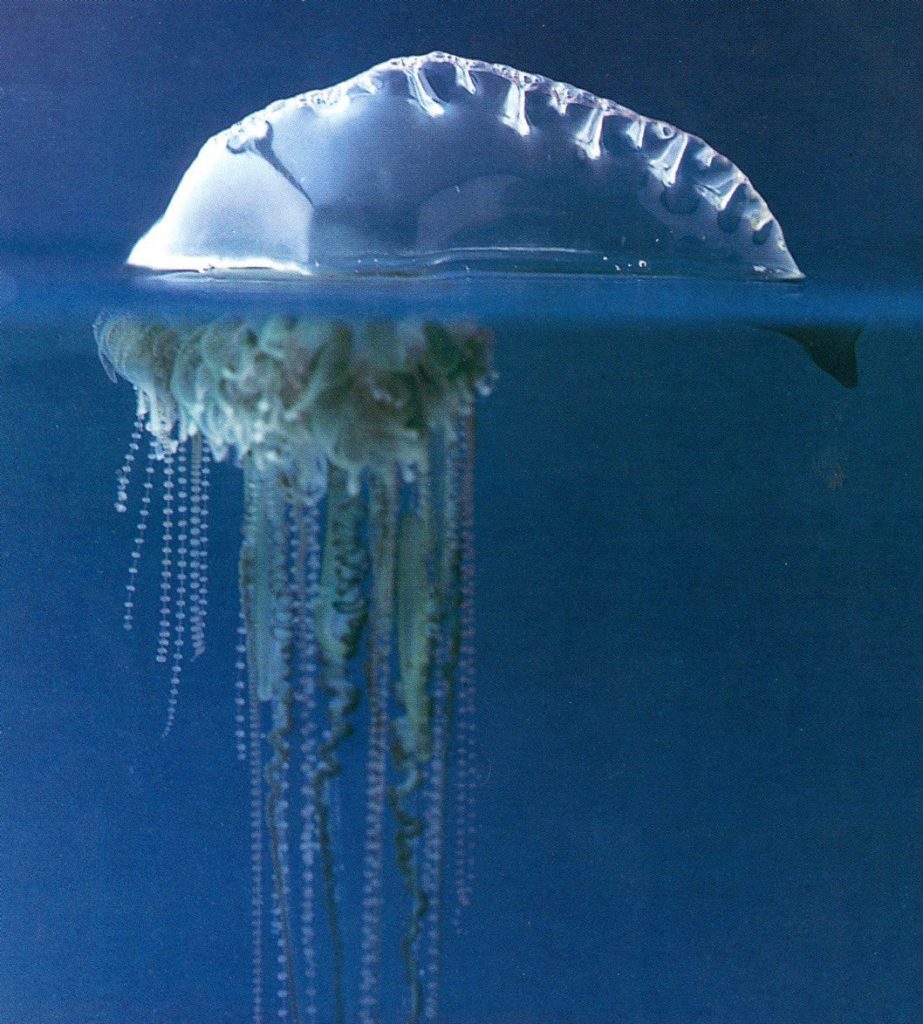The Portuguese man of war is a colony of thousands of different organisms, known as polyps, all working together to create what appears to be a single animal. As most of this is made up of long, stinging tubes, if s called a siphonophore, or ‘tube-bearer’ – from the Greek siphon (‘tube’) and pherein (‘to carry’). A siphonophore has four kinds of polyp. The pneumatophores (air carriers) form a purple, air-filled jelly that acts as a sail, reminding 18th-century sailors of the ship called a ‘man of war’. The dactylozooids (‘finger life forms’), responsible for defence, trail behind as long, poisonous tentacles.

The gastrozooids (‘stomach animals’) do the eating and digesting. And gonozooids (‘sex beasts’) manage the reproduction, making new polyps that adapt to any of the four roles required to make a man of war function. The gonozooids can’t eat, the gastrozooids can’t reproduce, and neither can defend themselves. That’s the job of the sexless, appetiteless dactylozooids. Each kind of polyp relies on the others for specialist abilities it does not itself possess, and none of them can live on their own.
Portuguese men of war travel by drifting on the currents and the wind, and clump together in herds of 1,000 or more. That’s why the first sight of just one individual is enough to close a beach. It’s unlikely a Portuguese man of war could kill you, but its sting is extremely painful, as 10,000 Australians find out every year.














